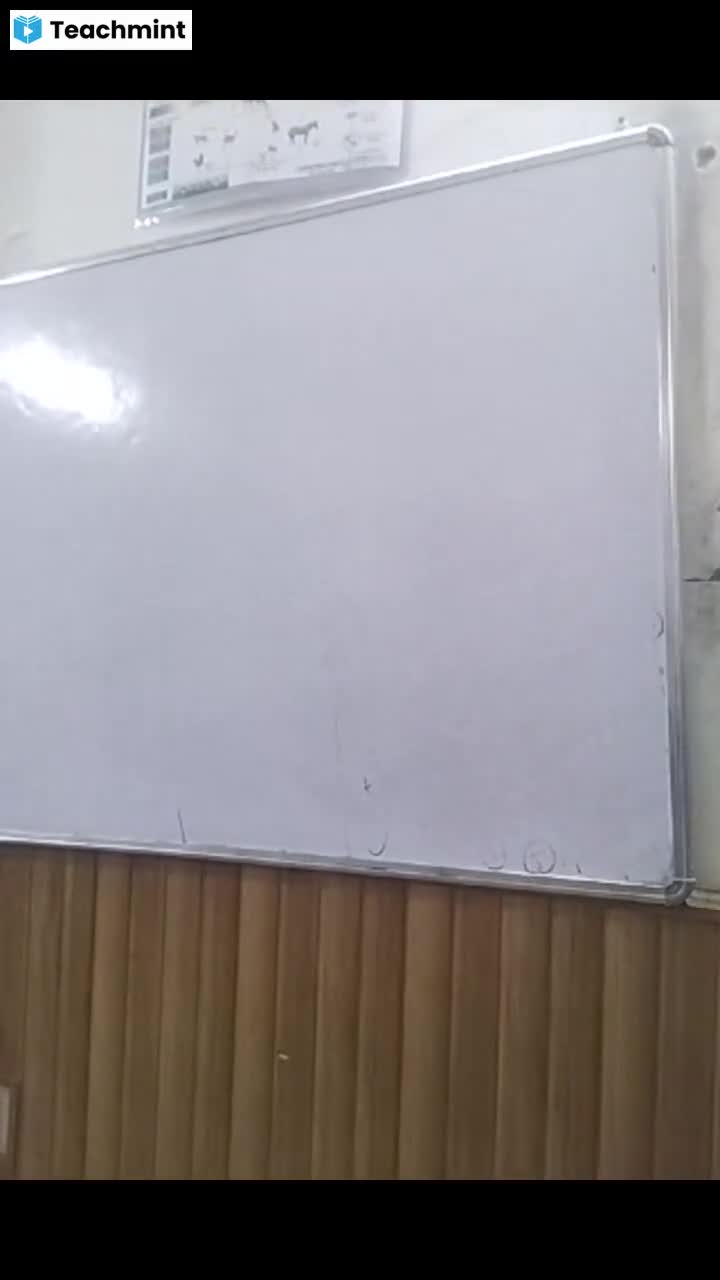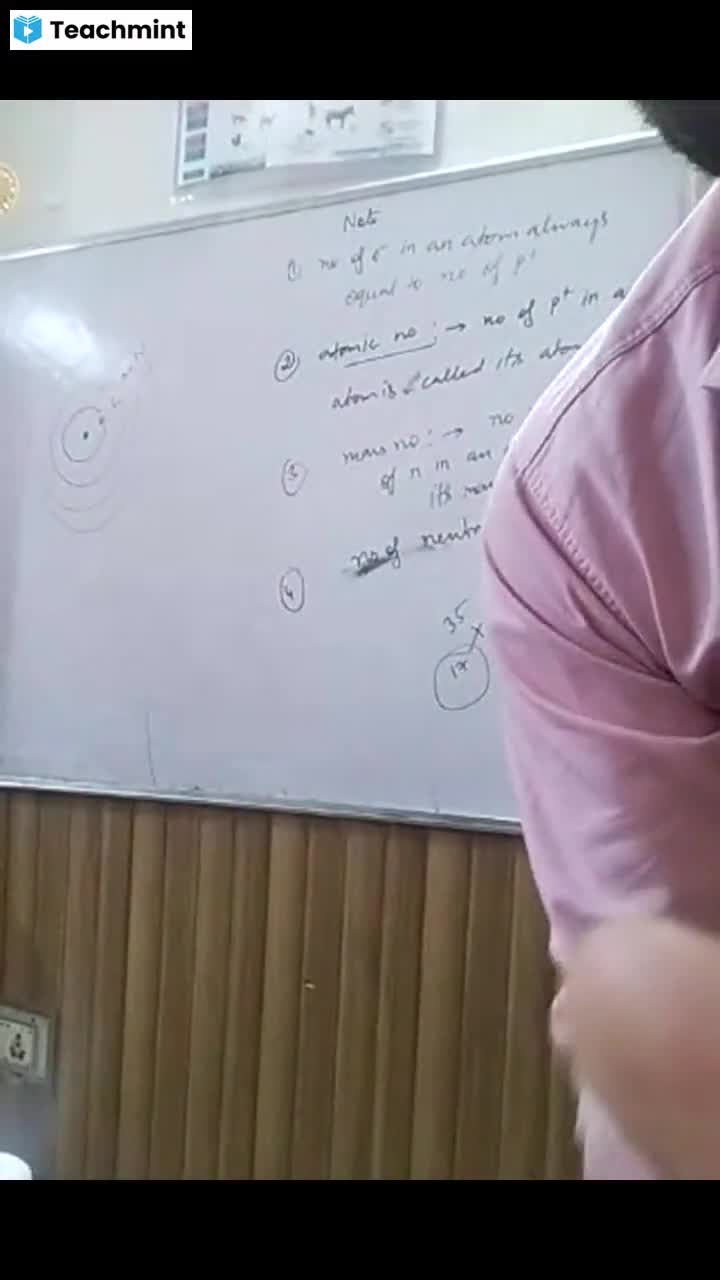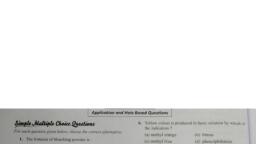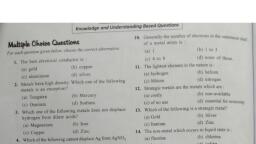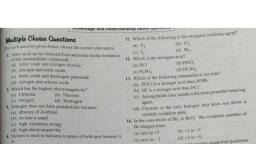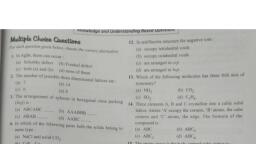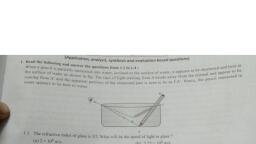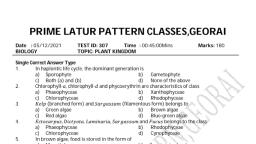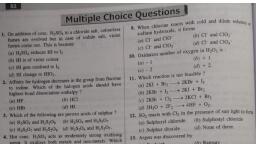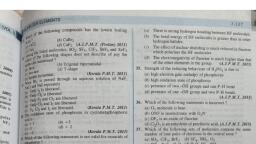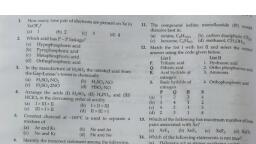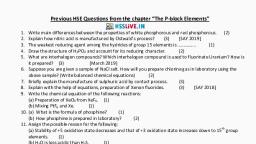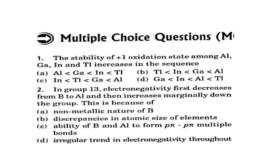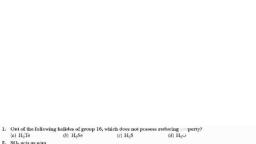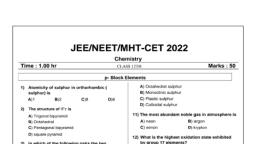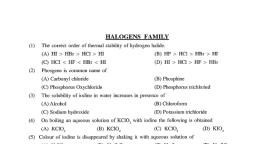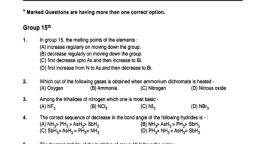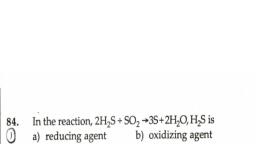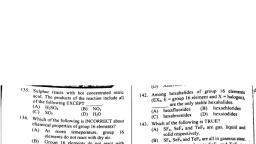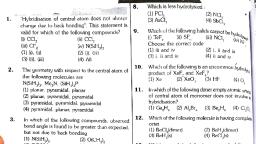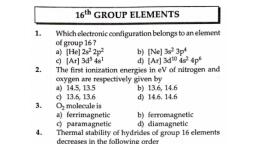Page 1 :
Application and Hots Based Questions, Simple Multiple Choice Questions, (a) N, in both cases, (b) N, with ammonium dichromate and NO with barium, azide, erch question given below, choase the correct alternative., Js qualitative analysis when H,S is passed through an, aucous solution of salt acidified with dil. HCI, a black, precipitate is obtained. On boiling the precipitate with, dil HNO, it forms a solution of blue colour. Addition of, expess of aqueous solution of ammonia to this solution gives, (c) N,0 with ammonium dichromate and N, with barium, azide, (d) N,O with ammonium dichromate and NO, with barium, azide, 5. In the preparation of HNO. we get NO gas by catalytic, oxidation of ammonia. The moles of NO produced by the, oxidation of two moles of NH, will be, (a) deep blue precipitate of Cu (OH),, (b) deep blue solution of [Cu(NH)*, (e) deep blue solution of Cu(NO,),, (d) deep blue solution of Cu(OH)2 Cu(NO,),, 2. On addition of conc. H,SO, to a chloride salt, colourless, fumes are evolved but in case of iodide salt, violet fumes, come out. This is because, (а) 2, (b) 3, (c) 4, 6. A black compound of manganese reacts with a halogen acid, to give greenish yellow gas. When excess of this gas reacts, with NH, an unstable trihalide is formed. In this process the, oxidation state of nitrogen changes from........., (d) 6, (a) H,SO, reduces HI to I,, (b) HI is of violet colour, (c) HI gets oxidised to I,, (d) HI changes to HIO,, 3. Least volatile hydrogen halide is:, (a) -3 to +3, (b) -3 to 0, (d) 0 to-3, (c) -3 to +5, 7. On dissolving moderate amount of sodium metal in liquid, NH, at low temperature, which one of the folowing does, not occur?, (a) Blue coloured solution is obtained., (b) Na* ions are formed in the solution., (c) Liquid NH, becomes good conductor of electricity., (d) Liquid ammonia remains diamagnetic., (а) HF, (b) HCI, (c) HI, (d) HBr., 4. On heating ammonium dichromate and barium azide, separately we get:
Page 2 :
VEEFAK CDƏE Dample Faper Chemistry 1, (b) BaCl,, (d) ICl,, 9. The number of lone pairs of electrons present in central atom, 8. XeF, is isostructural with :, (a) SbCl, (c) TeF2, (a) CIO, 10,> BrO, (b) 10,> BrO, > CIO,, (c) BrO,> 10,> CIO, (d) BrO > CIO> 10,, Assertion–Reason Based Questions, <., of BrF, is:, (a) 0, The questions given below consist of two statements, each, an Assertion (A) and a Reason (R). Examine both, (b) 1, (c) 2, (d) 3., the statements and make the correct choice as per, 10. Ionization potential values of noble gases decrease down, the group with increase in atomic size. Xenon forms binary, fluorides by the direct reaction of elements. Identify the, correct statement(s) from below :, (a) Only the heavier noble gases form such compounds., (b) It happens because the noble gases have higher, ionization energies., (c) It happens because the compounds are formed with low, ionisation energy., (d) Octet of electrons provide the stable arrangements., instructions given below:, (a) If both (A) and (R) are correct and (R) is correct, explanation of (A)., (b) If both (A) and (R) correct but (R) is not correct, explanation of (A)., (c) If (A) is correct but (R) is wrong., (d) If (A) is wrong but (R) is correct., Complex Multiple Choice Questions, 15. Assertion : HNO, makes iron passive., Reason : HNO, forms a protective layer of ferric nitrate, on the surface of iron., 16. Assertion : Both rhombic and monoclinic sulphur exist, 11. Which of the following statements are true ?, (A) Only type of interactions between particles of noble, gases are due to weak dispersion forces., (B) Ionisation enthalpy of molecular oxygen is very close, Sg but oxygen exists as O., Reason : Oxygen form p,, size and small bond length but P, possible in sulphur., 17. Assertion : Fluorine combines with sulphur to form SF,, but no other halogen forms hexahalide with sulphur., Reason : The reactivity of halogens increases as the atomic, number increases., Pg multiple bond due to small, Pr bonding is not, to that of xenon., (C) Hydrolysis of XeF, is a redox reaction., (D) Xenon fluorides are not reactive., (a) (A) and (B), (b) (A) and (C), (c) (B) and (C), (d) (A) and (D) /NCERTExemplar, 18. Assertion : HI cannot be prepared by the reaction of KI, with concentrated H,SO, Reason HI has lowest H -X bond strength among, halogen acids., 12. Which of the following statements are correct ?, (A) S-S bond is present in H,S,06, (B) In peroxosulphuric acid (H,So,) sulphur is in +6, oxidation state., (C) Iron powder along with Al,O, and K,0 is used as a True/ False Based Questions, catalyst in the preparation of NH, by Haber's process., (D) Change in enthalpy is positive for the preparation of, So, by catalytic oxidation of SO,., (a) (A) and (B), The following questions consist of two statements each, printed as SI and S II. While answering these questions, you are required to examine these two statements carefully, and decide to choose anyone of the four responses., (b) (A) and (C), (c) (B) and (C), (d) (A) and (D)/NCERTExemplar, 13. Which of the following statements are correct for SO, gas?, (A) It acts as bleaching agent in moist conditions., (B) Its molecule has linear geometry., (C) Its dilute solution is used as disinfectant., (D) It can be prepared by the reaction of dilute H,SO, with, metal sulphide., (a) (A) and (B), (a) Both SI and S II are true., (b) Both S I and S II are false., (c) SI is true but S II is false., (d) Sl is false but S II is true., (b) (A) and (C), (d) (A) and (D), 19. SI: In liquid state, hydrogen chloride is a stronger aclu, (c) (B) and (C), than hydrogen fluoride., SII: Fluorine provides largest variety of interhalogen, compounds., Sequence Based Qyestions, 14. Reduction potentials of some ions are given below. Arrange, them in decreasing order of oxidising power., CIO,, 20. SI: The molecule of sulphur dioxide has angular shape, SII: The molecule of IF, has square planar structure., 21. SI: Among nitrogen halides NX, the dipole moment, highest for NI, and lowest for NF 3-, 10,, Ee -1.19V E-1.65V E-1.74V, Bro,, Ion, Reduction, potential E/V
Page 3 :
SH: Nitrogen halides NX, have triangular pyramidal, Select the appropriate option from the following:, structure., ABCD, ABCD, (a) 3 21 4, (c) 1 2 3 4, 22. SI: NaCl reacts with concentrated H,so, to give, (b) 3 4 2 1, (d) 2 4 3 2, colourless fumes with pungent smell. but on adding, MnO, the fumes become greenish yellow., SII: MnO, oxidises HCI to chlorine gas which is, greenish yellow., 24. Match the items of Column I and Column II mark the, correct option:, Column I, Column II, Matching Based Questions, A. Its partial hydrolysis does not change, oxidation state of central atom., 1. He, 2. XeF, 23. Match the species given in Column I with the shape given, in Column II and mark the correct option., B. It is used in modern diving apparatus., C. It is used to provide inert atmosphere, for filling electrical bulbs., 3. XeF4, Column I, Column II, A. SF4, I. Tetrahedral, D. Its central atom is in sp d hybridisation. 4. Ar, B. BrF, 2. Trigonal Pyramidal, Select the appropriate option from the following:, C. Br05, D. NH, 3. Sea-saw shaped, ABCD, ABCD, (a) 1 4 2 3, (c) 2 1 4 3, (b) 1 2 3 4, (d) 1 3 2 4, 4. Bent T-shaped





